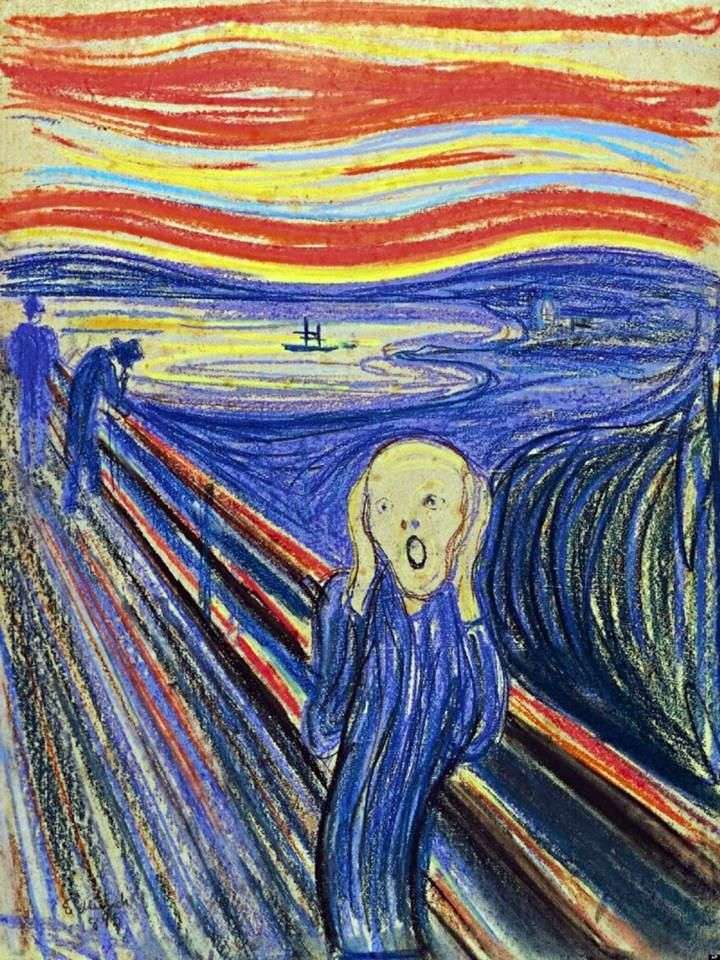
The influence that Munk had on everything he saw in Paris and Berlin is felt in his film Creek. This work, made on cardboard in oil, tempera and pastel, is one of several author’s versions. In the foreground, Munch portrayed a lonely young woman in the heat of passion. She covered her ears with her hands, trying to drown out the sounds and disconnect from all reality. A long-drawn cry cuts out of her open mouth. The exaggerated bends of a woman’s body are likened to curved, as if spiraling lines of a landscape. It is also part of the landscape at the same time, and is rejected from it. Two figures are moving towards the woman, and this further emphasizes her loneliness.
On the other side of the wooden balustrade, Munch represents the frightening element of the coastal landscape and river. Heaven Munch portrayed as a restless fermentation of red, cream and green stripes. The artist transmits the state of his heroine through deformed forms and distorted colors, thereby associating himself with symbolism and emerging expressionism. Although promising reductions are present in distant plans, its fantastic colors further reinforce the overall impression of the conventionality of the construction of a planar picture space.
Painting Munch does not create an image of reality, but conveys only an idea of it. The work of Creek is part of the pictorial cycle Frieze of Life, dedicated to perennial themes: love and death. “These paintings represent the impressions, the moods of the life of the soul,” explained Munch.
In them, he sublimates his psychological youthful traumas associated with the violent religiosity of his father, with the death of his mother and sister. Again and again he will return to these painful topics. In the works of Munch, the pain of personal losses is felt so acutely that the viewer sees in them by no means a bit from reality, but precisely the state of the suffering soul.
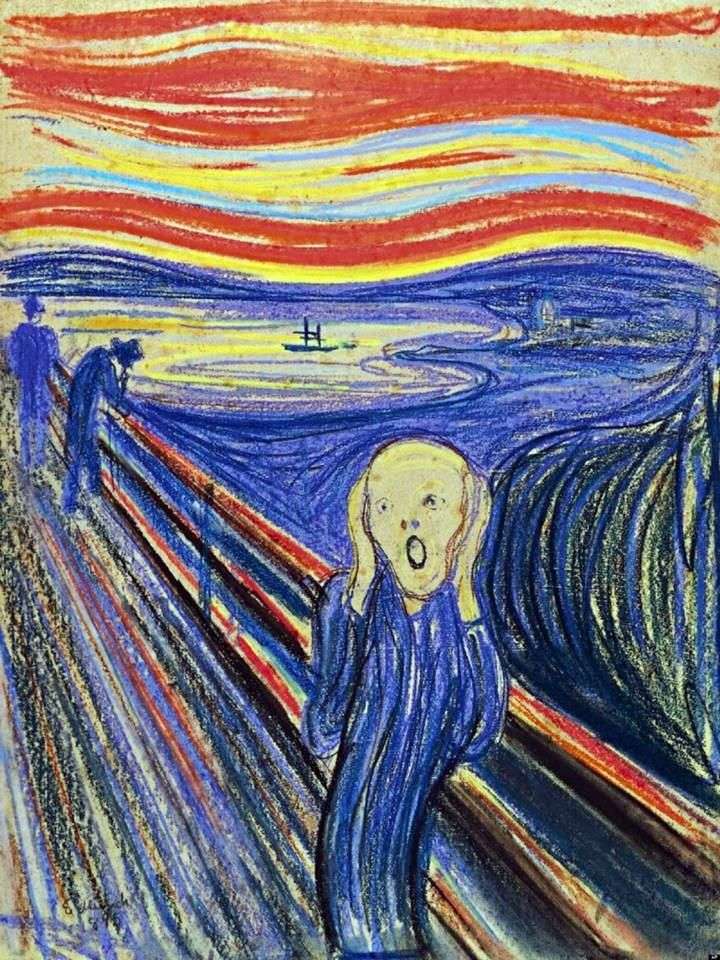 Creek – Edvard Munch
Creek – Edvard Munch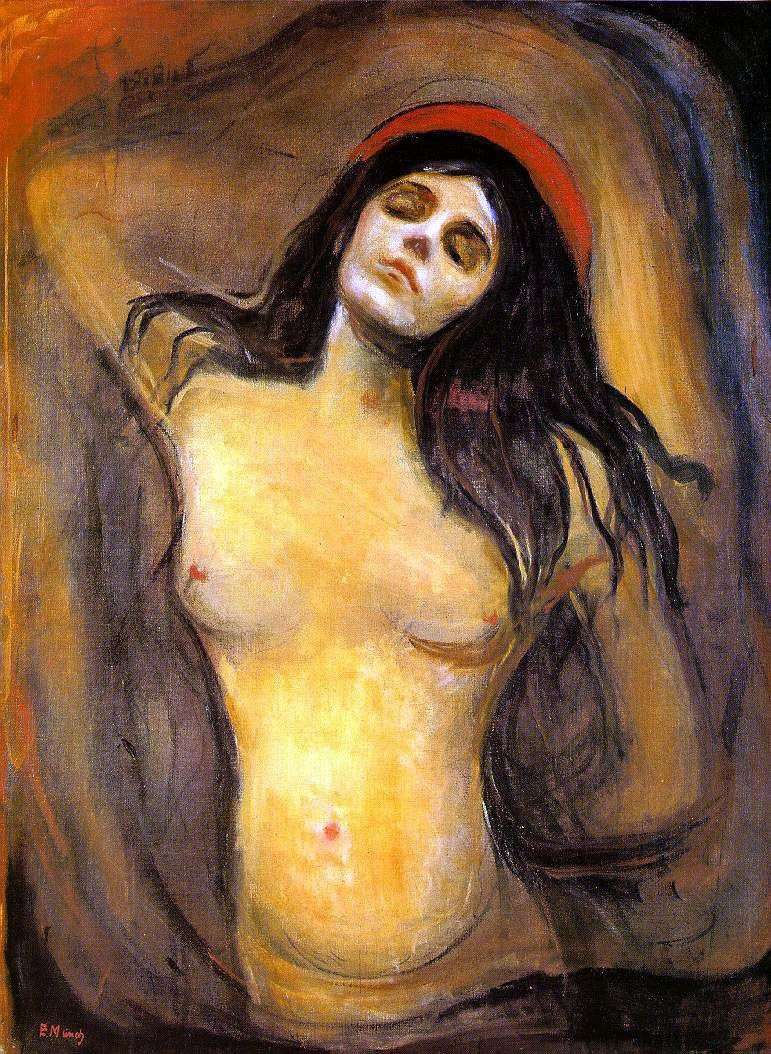 Madonna by Edvard Munch
Madonna by Edvard Munch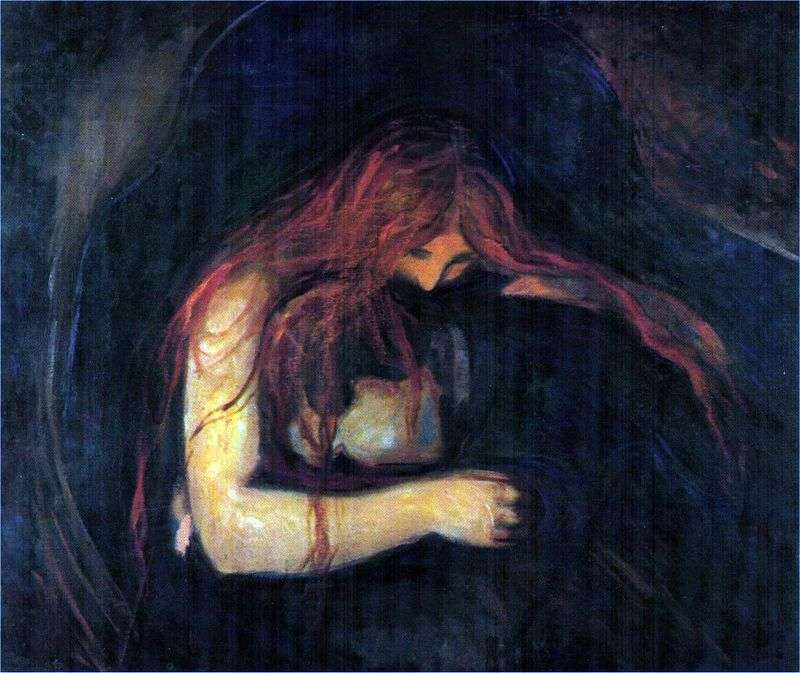 Vampire by Edvard Munch
Vampire by Edvard Munch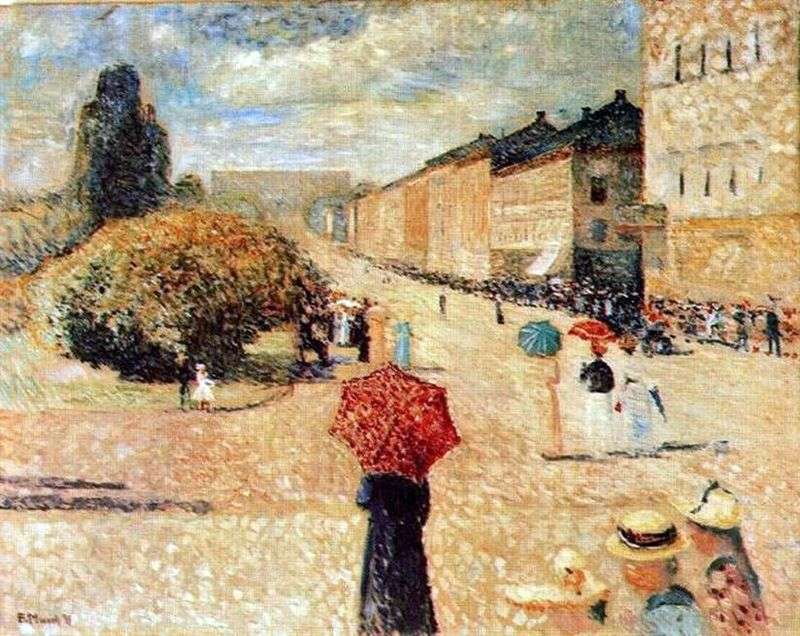 Spring Day at Karl-Johans-Gate by Edvard Munch
Spring Day at Karl-Johans-Gate by Edvard Munch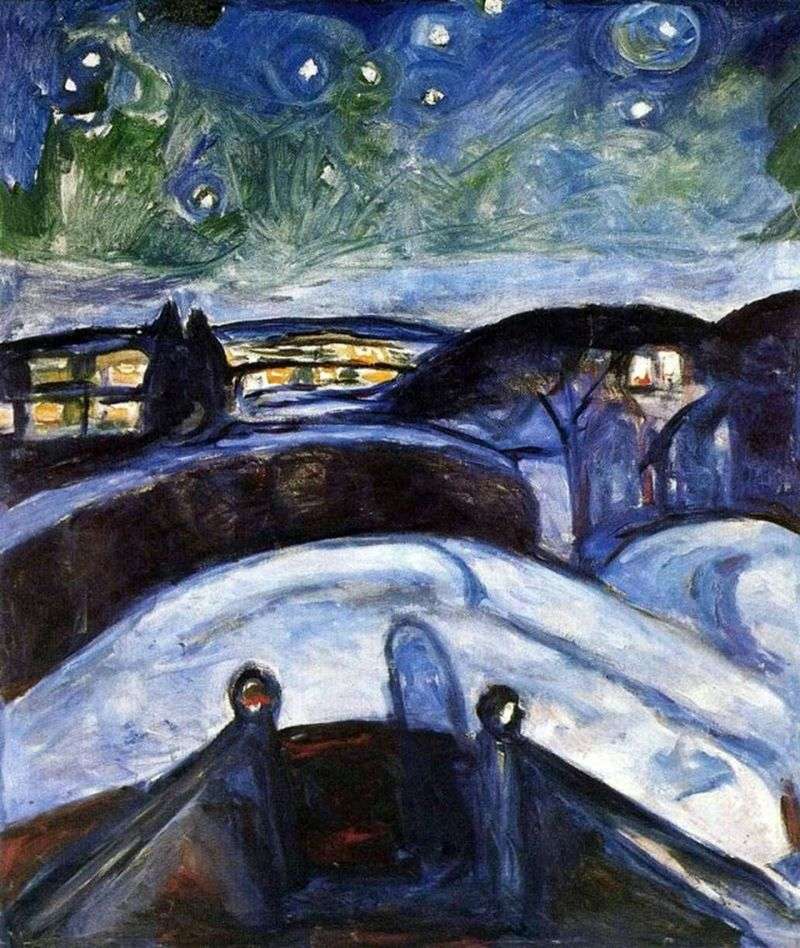 Starry Night by Edvard Munch
Starry Night by Edvard Munch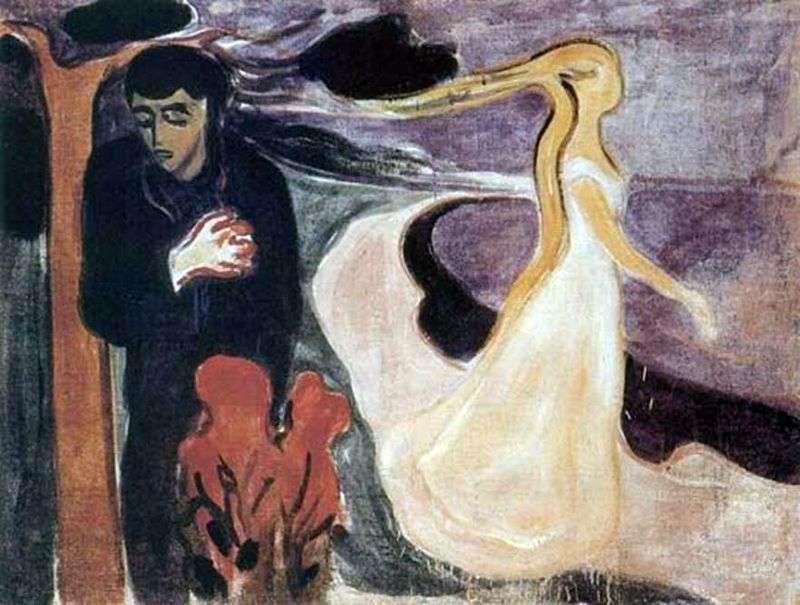 Parting by Edvard Munch
Parting by Edvard Munch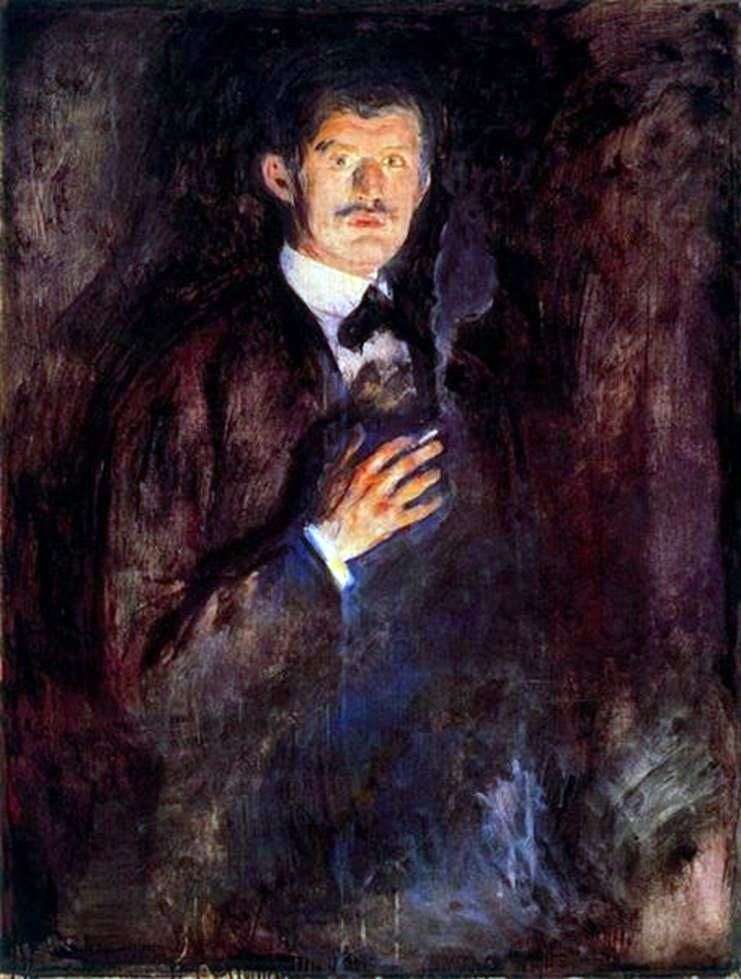 Self Portrait by Edvard Munch
Self Portrait by Edvard Munch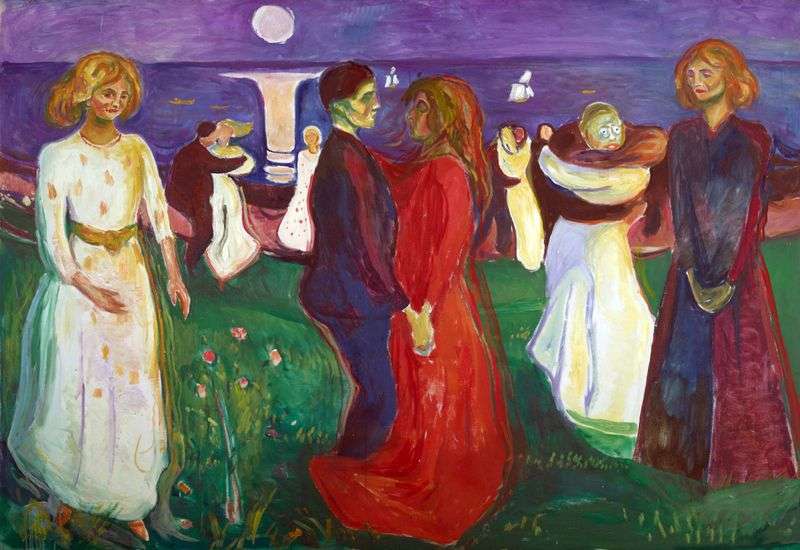 Dance of Life by Edvard Munch
Dance of Life by Edvard Munch